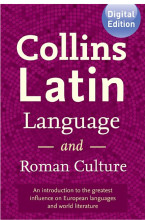Major Movements in Psychology - Gestalt Psychology
12 important questions on Major Movements in Psychology - Gestalt Psychology
What is the basic concept of Gestalt Psychology?
Furthermore, knowledge does not come from a collection of isolated bits of information. Rather the mind creates a whole out of the relationships between separate parts.
Gestalt psychology is a holistic theory.
What is a gestalt?
How do Gestalt ideas pertain to perception?
As the sensory stimulation coming in differs depending upon the circumstance, we would not be able to recognize an object or person as the same across different situations if our mind did not actively organize our perceptions to recognize the gestalt.
- Higher grades + faster learning
- Never study anything twice
- 100% sure, 100% understanding
Who were the pioneers of Gestalt theory?
His interest was first piqued when he noticed the illusion of motion while sitting on a train. Although the landscape outside the train was stationary, it seemed to be moving backwards as the train sped by.
When he began his investigations at the University of Frankfurt in 1910, two slightly younger psychologists, Wolfgang Köhler (1887-1967), und Kurt Koffka (1886-1941) came to work with him.
Their research into the Phi Effect was the beginning of a lifelong, shared commitment to Gestalt research and theory.
Why is Gestalt theory important?
- Gestalt theory put the mind back into academic psychology.
- Gestalt theory introduced a holistic paradigm, which was in sharp contrast to the associationist approach found in both behaviorism and Wilhelm Wundt's structuralism.
How did the holistic view of Gestalt theory go against the scientific worldview of the time?
Gestalt theorists challenged this reductionist assumption. They were interested in synthetic reasoning. How do you put the parts back together again? How do you make a whole out of the relationships between parts?
Their core position was that "the whole is greater than the sum of its parts".
How did William James's functionalism anticipate Gestalt theory?
What other principles of perception come from Gestalt theory?
Closure reflects the tendency to fill in the gaps of a gestalt. If we see a circle with sections missing, we will still see it as a circle.
Further, the mind will group parts into a whole according to the simplest solution.
What were Wolfgang Köhler's studies on insight learning?
What did these studies on insight learning show?
- The animals arrived at their solutions only after surveying the entire environment.
- The problem was not solved through trial and error via rewards and punishments as the behaviorists would have predicted. Instead the animal arrived at a complete solution all at once.
In other words, the chimps did not solve problems in a piecemeal fashion, but rather in a holistic way. Köhler referred to this holistic form of problem solving as insight learning.
How did Wolfgang Köhler study insight learning using apes?
What is the difference between Gestalt psychology and Gestalt psychotherapy?
Gestalt therapy is commonly considered part of humanistic psychology and incorporates principles from the philosophical schools of phenomenology and existentialism as well as psychoanalysis and Gestalt psychology.
The question on the page originate from the summary of the following study material:
- A unique study and practice tool
- Never study anything twice again
- Get the grades you hope for
- 100% sure, 100% understanding
































